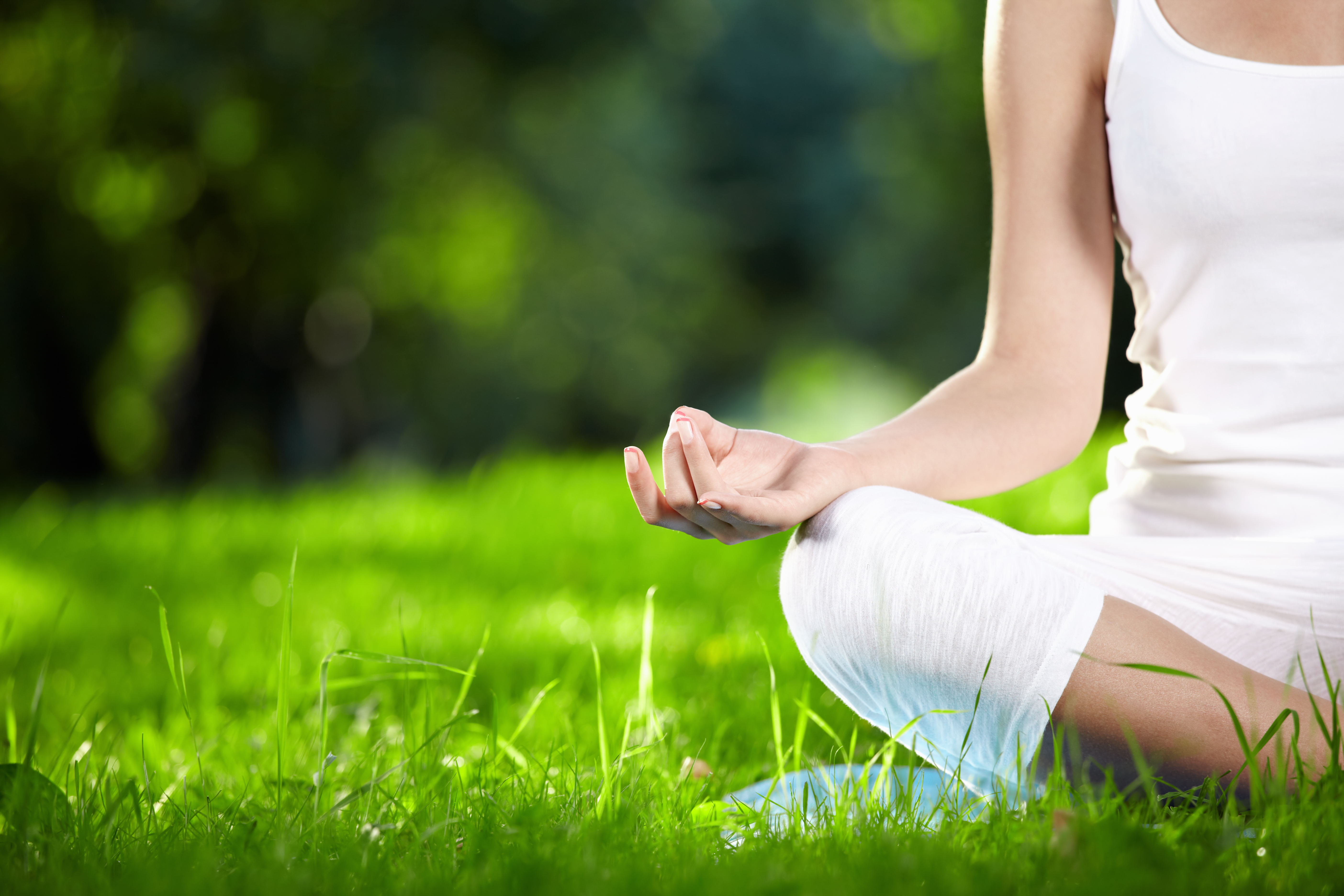How much of your day would you say is spent in the moment rather than reflecting on the past or thinking about the future?
How many times have you asked someone a question but didn’t really listen to the answer? Or completely forgot something that was said to you only a brief moment before?
We all have the ability to stay present and connected to the here and now, to be mindful, but we need to exercise our mind to get better at this every day. If we constantly let our minds worry about what might happen and what has happened to us in the past, it only leads to frustration, stress and unhappiness. All we really have is the present. The past no longer exists and we can’t predict the future, so isn’t it better to focus on what we can actually control; the present moment?
Mindfulness is a trait that we all possess naturally but it comes more easily to us when we practice it on a daily basis. Just as we exercise our bodies, we must exercise our minds to become more mindful.
What exactly is mindfulness?
Mindfulness is the quality of being fully present and engaged in the present moment, aware of where we are and what we’re doing, free from distractions. It’s about being aware of your own thoughts and feelings but without reacting to them. By training our minds to be present and in the moment, we learn to become less reactive to our life’s circumstances. We learn to take a step back when we’re faced with a difficult situation and to become less affected by things that are happening around us.
Mindfulness meditation, while focusing on our sensations, emotions and thoughts, asks us to suspend all judgement about what we think and feel and simply acknowledge, accept and be open to the thoughts that run through our minds.
Bill Gates practices mindfulness two to three times a week for 10 minutes and says that Andy Puddicombe, the founder and voice behind the Headspace app has hugely helped him focus and pay attention to his thoughts.
“It’s about taking a few minutes out of my day, learning how to pay attention to the thoughts in my head, and gaining a little bit of distance from them.”- Bill Gates on mindfulness

The benefits of mindfulness
There are numerous benefits to practising mindfulness from decreasing stress levels to increasing happiness and focus.
Mindfulness decreases anxiety and stress
“Mindfulness is one of the best tools for eliminating real-time anxiety and physical stress responses”, says Kristen Rice, a behavioural health coach. Rice says that anxiety stems from our fight-or-flight response that’s triggered when we are thinking about something from our past or future. Mindfulness focuses on the present and combined with deep breathing, tells our nervous system that we are safe, allowing our mind and body to relax.
Stress causes our brains to release the hormone cortisol and mindfulness can help to reduce cortisol levels, helping us to focus and sleep better. Yoga teacher and author Jodi Ashbrook says that there are over 18,000 studies supporting meditation to lower stress.
Mindfulness increases positivity and compassion
Studies made by North-eastern University in the United States found that three weeks of using Headspace (app dedicated to mindfulness meditation), increased users’ compassion by 23% and reduced aggression by 57%. Another study found that after using the app for 10 days, users felt a greater sense of wellbeing and increased positivity.
Changes the structure of your brain
Research shows that practising mindfulness can change the structure of your brain. Jon Kabat-Zinn, creator of the Mindfulness-Based Stress Reduction (MBSR) program, explains how mindfulness lights up parts of our brains that aren’t normally activated when we’re performing mundane, everyday tasks on autopilot.
16 participants took part in a study to look at the cognitive benefits of mindfulness. MRI scans were taken of their brains before and after an eight-week mindfulness-based stress reduction program which consisted of an average of 27 minutes of mindfulness a day. After the eight weeks, the hippocampus (the part of the brain responsible for learning and memory) increased and the amygdala (which becomes enlarged in times of stress and fear) decreased. This shows that mindfulness practice can alter the brain to improve memory and learning abilities and to decrease stress.
Greater awareness and better communication
Another good reason to practice mindfulness is that you become more aware of your most predominant thoughts and feelings, allowing you to address them to improve your life. You gain more control over your emotions, which is a great asset when communicating with others, as you’re less likely to be overly reactive and instead, respond with greater control and clarity.
Promotes a positive body image
Mindfulness could also help to promote a positive body image. Researchers at Anglia Ruskin University in England studied 646 British adults between the ages of 18 and 76 and asked them to fill out questionnaires on bodily awareness, body image and self-consciousness. Those who were more in tune with their bodies (aware of body signals like pain and hunger etc.) felt more positive about their body image.
Now that we’ve seen the benefits, let’s get to the basics.
Here’s some help to get you started
Mindfulness can be practised at anytime, anywhere. Just follow these simple steps.

Schedule a time: pick a time to practice for a couple of minutes every day, building up more time when you’ve made mindfulness a habit.
Find a quiet place: whether it be your bedroom or a nice spot in the park, all you need is a place where you can be alone and undisturbed.
Get comfortable: if you’re afraid that you’ll fall asleep, it’s better to sit up in a comfortable position. You don’t have to sit cross-legged. It’s better to wear comfortable clothing and nothing that’s too tight.
Observe the present moment as it is: let thoughts come and go, without judgement. The goal is awareness, not emptying your mind.
Focus on your breath: pay close attention to your breath and when your mind wanders, bring your thoughts back to your breathing. You can focus your eyes on a particular point and soften your gaze or close them.
Be kind to yourself if your mind loses focus: there’s no need to stress if you are having difficulty remaining present, just bring your attention back to your breathing.
You can even incorporate mindfulness in your day-to-day activities. When you wake up in the morning take some deep breaths, open your window and focus your attention on the sounds that you hear and feel the cold air against your skin. Even if you’re out walking, you can practice being more present by leaving your phone alone and taking in everything you see and hear around you.
Tricks to stick with it
Practising mindfulness might seem like something simple but it’s not always so easy to stay present without your mind wandering to thoughts about the past or thoughts about tomorrow.
Headspace mention eight meditation techniques that you can use to cultivate mindfulness if you’re finding it difficult as a beginner.
Here are a few:
Focusing your attention: this most commonly used technique focuses our attention on our breath to maintain our awareness and keep us in the present moment. Take deep breaths, paying attention to how your chest expands when you inhale and falls when you exhale. When your mind wanders, bring your attention back to your breath.
Body scanning: this technique draws awareness to your body by mentally scanning your body from head to toe, paying attention to anywhere you feel pain, soreness or discomfort.
Taking notes: if you want to remember certain thoughts that pop into your head while meditating, take a pen and paper and jot them down, that way you can come back to them later and go back to concentrating on being totally present in the here and now.
Visualisation: sometimes focusing our attention on a familiar object, place or person can help to keep our minds focused on the present.
Loving-kindness: this involves focusing on different people that we may or may not know and may or may not like and directing good wishes to ourselves and then onto those people. This can help us to let go of negative feelings.
Resting your awareness: rather than focusing on your breath, your body or visualising a person or place, let the mind be. Whatever thoughts and feelings you experience, simply let them pass by without judging them or reacting to them.
Headspace offers a free 10-day beginner’s course on mindfulness to ease you in. You can sign up here. You can also check out mindful.org for some simple guided meditations combining breath awareness, body scanning and guided meditations to sleep better and reduce anxiety.
Things to consider
When you start out on your mindfulness journey, know that it’s normal for you to feel restless and uncomfortable. You might also feel annoyed that there are too many thoughts running through your head, but mindfulness isn’t about pushing the thoughts away, it’s about letting them come freely, but without any judgement.
Practising mindfulness is a great way to manage stress and anxiety and to boost your compassion, empathy, focus, energy and happiness. Our life can quickly pass us by if we’re not focused on what matters most if we’re spending too much time dwelling on the past or anticipating the future. Break this pattern of thought with mindfulness and live in the moment.
Want to know how many times a day you’re in a mindful state? Take this Mindful Attention Awareness Score Test to find out. If your score is low, you could probably benefit from doing a bit of mindfulness.









Join the discussion